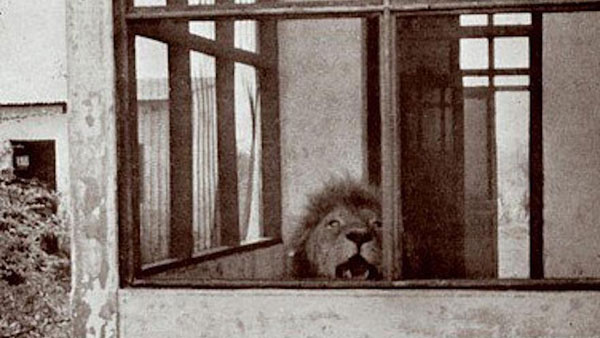Gorongosa National Park in Central Mozambique stands as a representative for environmental change and a commitment to conservation by both government and local communities. As far back as 1920 this park has been a protected wildlife area, and was also the scene of the first ever wildlife survey, providing a perspective on animal activity never seen before. It was also the park dedicated to the protection of the black rhino and the nyala antelope; another reference to the significance of this park as a wildlife haven. Naturally, publicity encouraged development within the park; the notion of safari was born and the building of camps and lodges significantly increased business in Gorongosa.
Along the floodplain of the Mussicadzi River, construction began in the 1940s on a safari lodge in anticipation of it providing a unique visual into a more remote area of this famous park. Today, it is widely known that lodge accommodation on a river bank provides enrichment to anyone’s visit to Africa, creating shaded, green retreats from the heat and offering effortless wildlife viewing, as both predator and prey are drawn to the replenishing waters. Mussicadzi River, however, was prone to breaking its banks once a year, as Mozambique’s heavy summer rains brought about raging floods. Even before completion, this business venture was abandoned as power was signed over to the elements. Unbeknownst to anyone at the time, this unfinished structure was to become a popular attraction in the Gorongosa National Park; the scene of a curious spectacle…

The bursting riverbanks and saturated Mussicadzi floodplains certainly chased any human visitors out of the area, as the camp was declared unfit for shelter; however, Gorongosa’s greatest feline inhabitants found this intricate construction offered convenience at its finest. A hideout during the rains, an elevated vantage point from which to eye wary herds, a safe haven for young cubs – the King had found his castle. Once word had spread that this dilapidated building had been occupied by Africa’s biggest cat, locals donned it Casa dos Leões: The Lion House.

From that time onwards, lions inhabited the house, guarding it as their territory and causing quite a scene amongst tourists and behavioural scientists alike. It seemed unusual for animals in the wild to occupy something as unfamiliar as a man-made structure, and it was certainly the source of fascination for many. Courteney Blunden, owner of Africa on Foot and nThambo Tree Camp, has closely monitored the behaviour of the lions in the Ross Pride in the Klaserie Game Reserve and, by comparison, provides insight into why the Gorongosa lions may continue to call this historical house home. As witnessed in the Klaserie, Ross Pride lionesses rely on several specific den sites in which to hide their newborn cubs; always returning to the same well-protected hideouts. It is no wonder then, that over decades, even through a civil war that tore Gorongosa to shreds, new generations of lions seek residence at The Lion House. Courteney emphasised the value of this structure in suggesting that the cats may also find this a platform on which to sleep in wet weather, as African cats are generally not partial to puddles!
Since Gorongosa’s restoration after the 1980s civil war that saw the utter destruction of this vibrant wildlife sanctuary, it has become an icon of optimism and conservational triumph. The population of lion was almost entirely wiped out, as was that of the elephant, and it was through determination and dedication that these Big Five greats have once again populated Mozambique’s remarkable landscape. The Lion House is now a symbol of history and embodies an essence of eeriness, as one entertains the thought of Africa’s most highly regarded predators living within the walls of a house that was built to safeguard humans touring this wild land.

In recent years, rangers and trackers at Gorongosa have identified certain lions who have been spotted at the Lion House, which nowadays is treated as more of an unseen hideout, as opposed to the deliberate declaration of territory that the Gorongosa lions of the 60s displayed. In a brief introduction to these lions one would meet Tripod; a lone, three-legged matriarch lioness of the park, well known amongst the rangers; the dark-maned Brando Brothers, fiercely territorial and occasionally spotted out-of –bounds at the Lion House; and The Baobab Pride, mysteriously absent during daylight hours, but chillingly vocal at night, as they can be heard claiming their territory at Lion House and Baobab Hill.



A heart warming history describing the park as a whole, the addition of the Lion House to Gorongosa’s undeniable attractions makes it a destination not to be missed. Book a few nights at Chitengo Safari Camp and experience the beauty of Central Mozambique, its victorious wildlife population and the unique big cat residence that is The Lion House.
Watch the remarkable 1960s footage of the thirty-strong pride of lions that initially took up residence at The Lion House:
https://www.facebook.com/photo.php?v=10150747983218729



